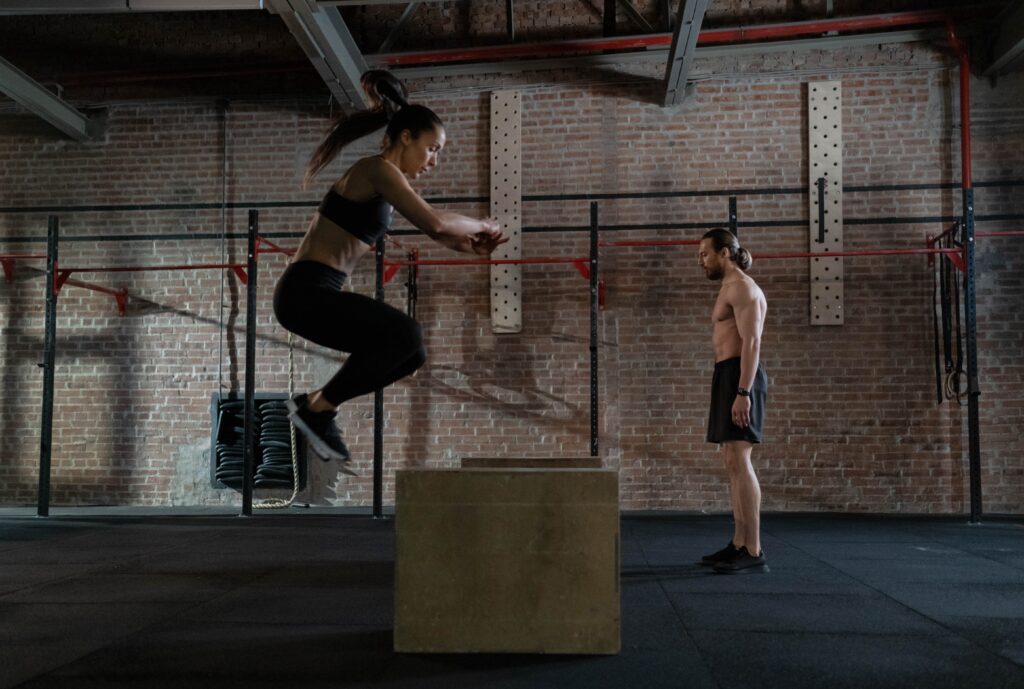
The Importance of Plyometrics and Landing Mechanics to Training and Injury Prevention
When it comes to most sports, the question is not “if” you get injured, but “when”. Accidents happen, mistakes can be made, and chances are that something will happen during training. As such, almost all sports take preventative measures to reduce the risk of injury by either building up strength and endurance so as minimmize the possibility of making mistakes, or teaching proper technique straight off the bat so as to do the same. In gymnastics, for example, you first learn how to safely land and the proper form of all the basic skills before progressing to more complex skills, no matter how good you are when you first begin.
So how, then, do plyometrics (a type of training that focuses on jumps, hops, bounds, or skips) play into injury prevention, and how can learning landing mechanics help with tha? Read on to find out!
What Is Plyometrics?
Plyometrics is a type of training that uses movements such as jumping, hopping, bounding, leaping, and skipping to help raise your speed, endurance, and strength. It is not to be confused with ballistic exercises, plyometrics (otherwise known as jump training or shock training) uses the above-mentioned modalities and is less object-focused, though there can be overlap at times.
An easy example of plyometric exercising would be skipping rope; the exercise helps you build endurance through how long you can take to skipping without stopping, speed by how quickly you can skip without the rope getting caught on your body, and strength by making your muscles stronger so as to make the skipping itself that much easier to perform. Typically, plyometric training can be less intense, but you can also change such by raising repetitions/the length of which you are taking to a particular exercise in the training as well.
How Can Plyometrics Help Me With Injury Prevention?
Performance training in any sport is all about preventing injury, whether it be through building up strength, speed, and endurance to make exercising that much easier, or training techniques that should be kept in mind when taking part in the sport. Plyometric training is one of the best modalities to use in your training to help build up your body so as to prevent injuries from happening; the more muscle mass you have, the faster you go, and the longer you can go can help greatly in preventing injuries from happening during training. Plyometrics are also a great way to help warm up the body and are therefore a good starting point for training time. Due to the nature of the focus on the muscles in your legs, applying plyometric training has also proven to help prevent ACL injuries, and is therefore a very good idea to take to. When you undergo plyometric training, ensure to be careful that you are implementing enough rest time as well, as not doing so can have the opposite effect of making you more prone to injuries.
What Are Landing Mechanics?
When it comes to landings, most people tend to do what comes naturally without giving landings a second thought. However, the mechanics of how to land to alleviate pressure on the joints and muscles of the body is one of the key components when it comes to injury prevention. Knowing just how the body functions in order to halt the momentum of your bodily motion in a way that doesn’t put a strain on the body is the entire reason landing mechanics are often the first thing looked at in most sports. Whether it be through plyometric type activities such as jumping, or through accidents such as falling, landings play a part in many different sports and are one of the most basic building blocks that such sports are built on.
Knowing how to properly land (on the balls of your feet before shifting the weight from your toes to your heels to help absorb the impact with a particular focus on your glutes and where your knees are in relation to your toes) and practicing this consistently can be a great exercise in helping you gain strength, speed, and endurance. In fact, exercises that practice landing mechanics can also greatly overlap with plyometric training, given that the one (jumping and otherwise moving upwards in the air) and the other (landing) are equal and opposite reactions that make up the same action.
Why Should I Include Landing Mechanics in My Training?
As previously touched on with plyometrics, landing mechanics are a great way to not only make certain to hone basic skill techniques while at the same time raising both your strength, endurance, and speed through the repetitive nature of adding such to your training. A landing complex can be a great addition to any warmup or practice, especially when the intent is to prevent injury through practicing such. Perfecting the technique of something so integral to absorbing momentum and interacting safely with the ground can help prevent injury in any part of the body should you fall, but most pointedly injuries in your ACLs, glutes, and associated musculature.
In Conclusion
Plyometrics and landing mechanics can seem silly to practice often, but they both serve as a great practice that is geared towards the specific actions you take in your sport and the muscles you’ll use the most often, therefore helping not only to prevent injury to said muscles but also will help strengthen your training regiment to give you easy-to-see results.
Curious about adding plyometrics and landing mechanics to your regular workout but unsure how to do so? The team at Kinetic Sports Performance and Football University can help you. Enhancing athletic performance while decreasing the risk of injury is one of the key things we focus on, and can help teach you how to incorporate plyometrics and landing mechanics through individual training sessions or a training package. Contact us today by calling us at 641-891-5304, emailing us at info@kineticsportsscienceksp.com, or filling out our online form to get started now!
